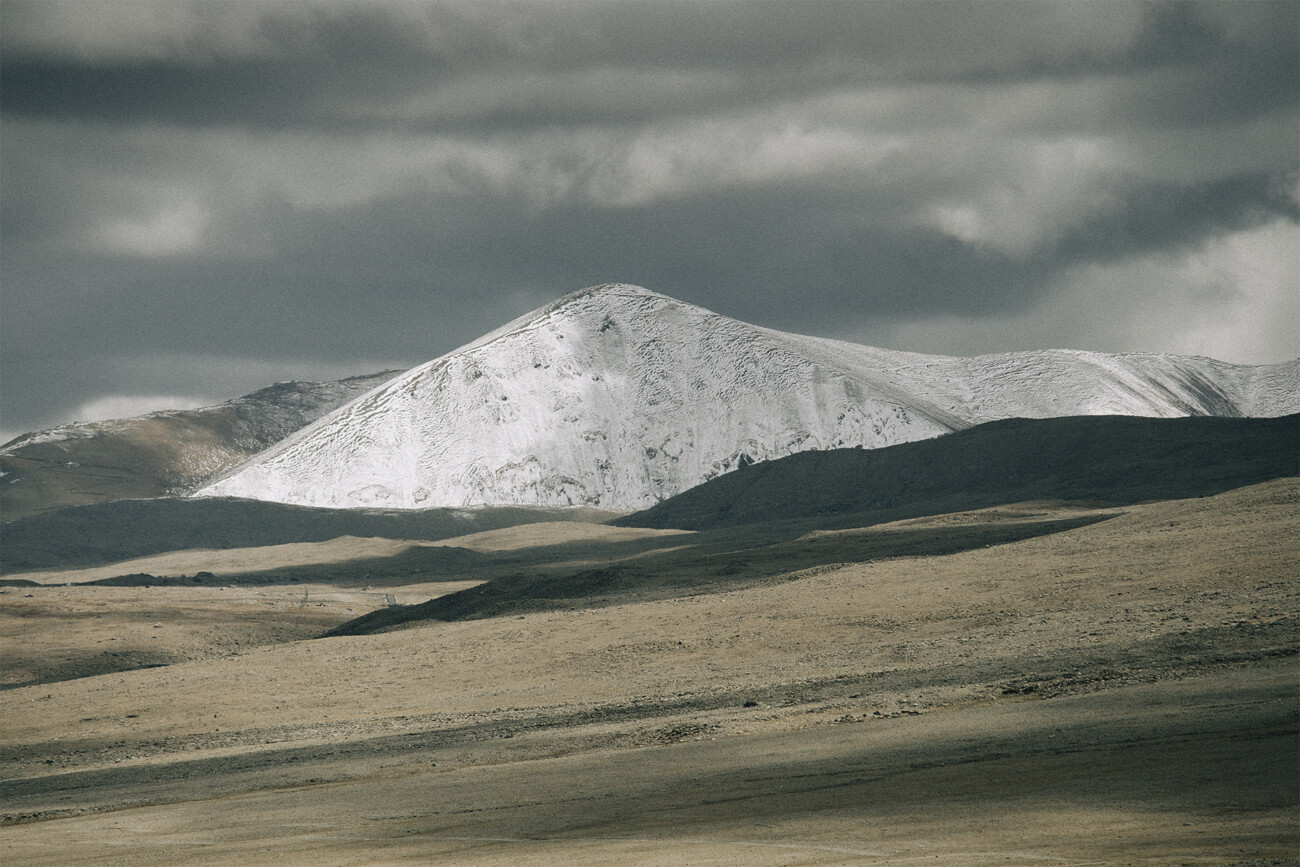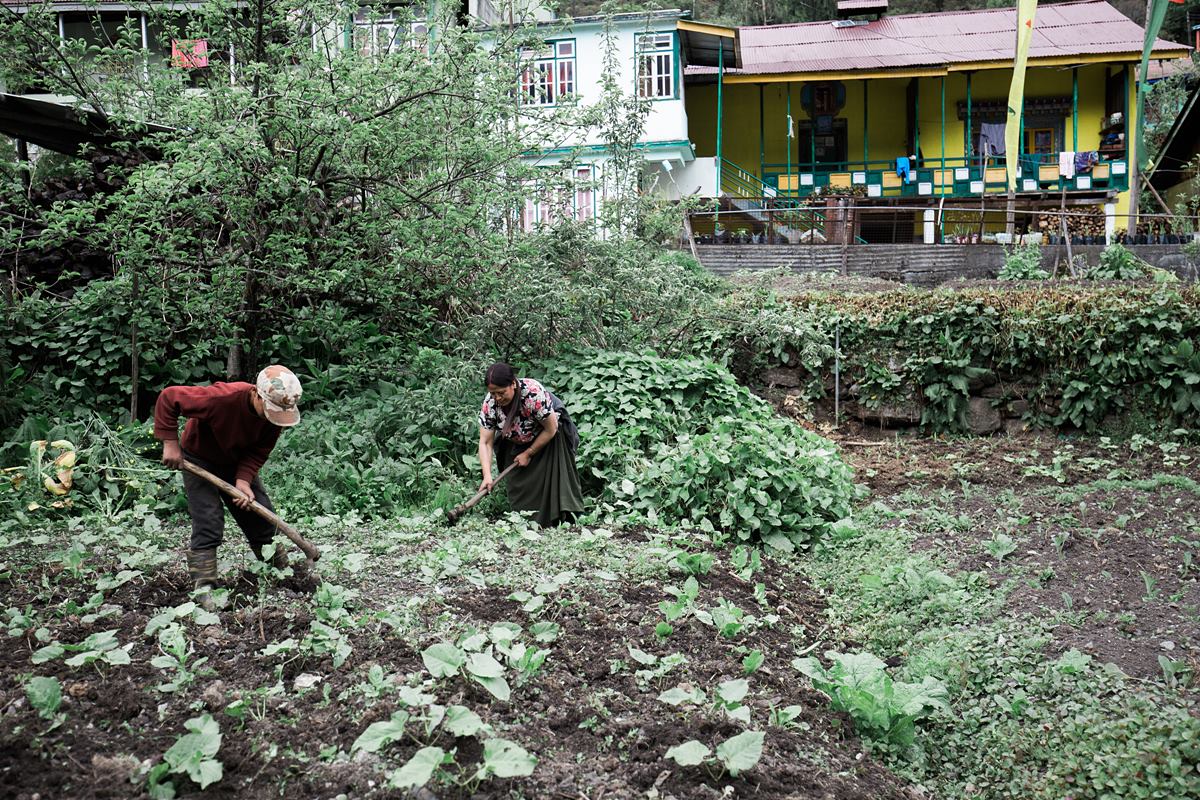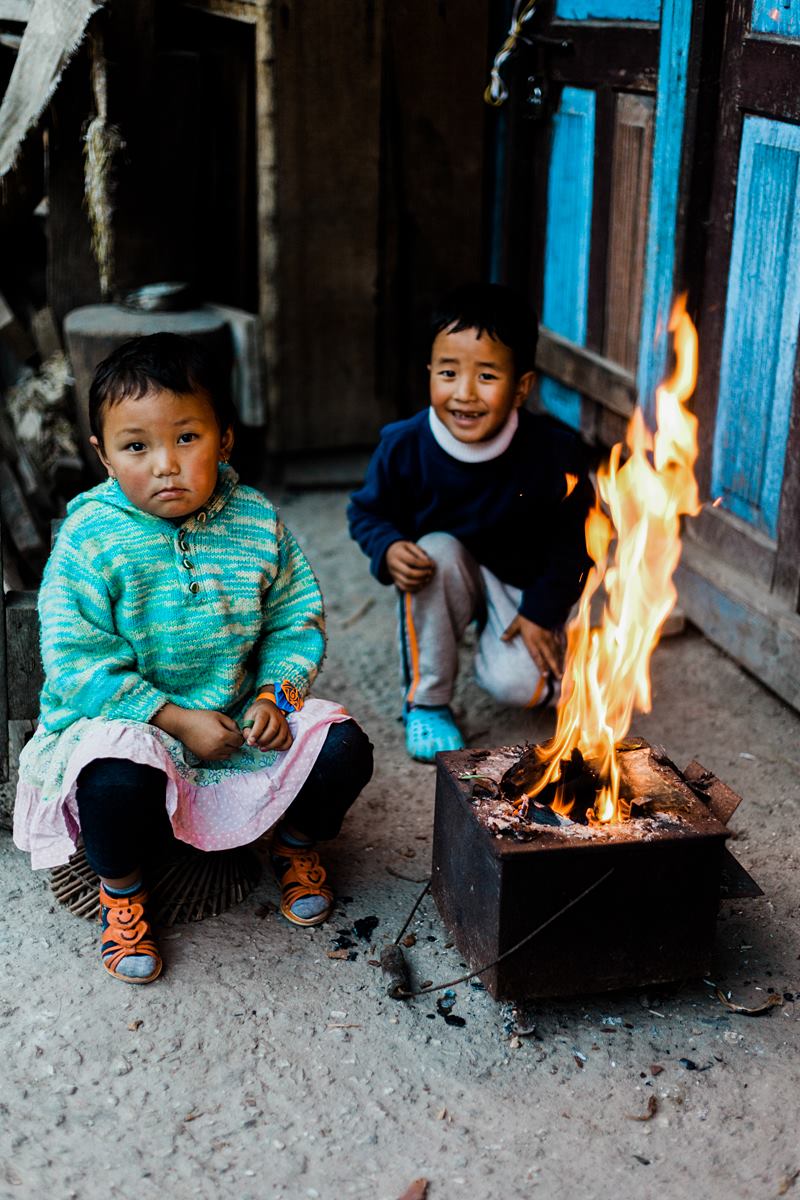The valleys of Lachen and Lachung lie on the southern slopes of the western half of the eastern Himalayas. Lachen valley, meaning ‘big pass’ has an area of 3635.75 hectares and is located on the right bank of the Lachen Chu1 at 2,700 meters above sea level. Lachung, meaning ‘little pass’, is located on the east bank of the Lachung Chu and stands at 2,745 meters above sea level, having an area of 2815.52 hectares. These valleys now fall under Chungthang administrative division of the North District of Sikkim. Both Lachenpas and Lachungpas speak a version of Tibeto-Burman language, closely related to the Tibetan dialect spoken in Ha Valley of western Bhutan. Now, after contact with the outside world and with education, they speak Nepali (lingua franca of Sikkim), Hindi and English.
A system of self-governance was established for these communities during the early part of the nineteenth century since they were too far removed from central authorities to follow rules applicable to other regions of Sikkim.
While on a tour, J.C. White, the first political officer of Sikkim observed:
“The two villages of Lamteng in the Lachen, and Lachung in the Lachung valley, have an unusual and almost communistic government of their own. On every occasion the whole population meets at a Panchayat, or council, where they sit in a ring in consultation…The consequence is everything is done deliberately…but the system seems to suit the people and I allowed it to be continued with some modification.” (White, pp. 79).

Initially the Pipon (head of the council) was appointed by the Chogyal from among the most suitable candidates. Some of the criteria for choosing the Pipon are: he must be a member of the local administration called Dzumsa (meaning ‘meeting place’); be a land revenue payee and possess wealth; be a male, preferably the head of a family, and should be intelligent. The Pipons were authorized to administer their villages. Dorji Samdup was the first Pipon appointed by the Chogyal in Lachen.

Since the Dzumsa had a very small membership anyone who wished to join was welcome. The membership grew from sixty in 1936 to 176 in 2003. In 1990, new measures were taken to limit the rapid growth of membership. Now, only Lachenpas and Lachungpas by birth can join the Dzumsa, and the general village council only accepts two new members a year. All male heads of the family are legitimate members while a widow can also become a member if her son is a minor. He replaces his mother once he attains adulthood.
On 12 November 2001, the state government issued a Gazette Extraordinary No 409 that stipulated that the ‘existing system of traditional institutions of Dzumsas practised in the two villages of Lachen and Lachung in North district of state shall continue to exist in accordance with the traditional and customary laws of the Dzumsas. Notwithstanding other provisions of the Sikkim Panchayat Act, the traditional institutions of the Dzumsas existing in the villages of Lachen and Lachung shall exercise the powers and functions provided under the Act in addition to the powers and functions exercised by them under the existing traditional customary law.’ The Pipons are now elected. All adults in the village are members of the Dzumsa and are allowed to participate in the selection process of office bearers—two Pipons, six Gembos, two Tsipos and two Gyapons. The elections are open and transparent.

The candidates stand at their appointed places and the voters gather around their chosen candidate and head counts are taken. Whoever has the larger number of votes is appointed the Pipon and the one with the lower head count is deemed assistant Pipon. All office-bearers are elected directly by the villagers, or as in the case of the Gyapons, in consultation with the council members. The Pipon is the highest official in the hierarchy and he is assisted by the Gyapons to perform various duties, such as convening meetings, and they also act as constables to the Pipon.

The Dzumsa is responsible for running the day-to-day affairs of the village. These include maintenance of local law and order, dispensation of justice, collection of taxes, organization of social functions and distribution of funds related to governmental schemes.
The life of the Dzumsa revolves around the Mang Khim where all the meetings, hearings, disputes, marriages, feasts and decisions about religious festivals are held. In the meetings, seasonal migration to higher pastures, harvesting, grazing and distribution of government assistance are discussed. Here, tenders for development projects are also held.
Dzumsa is the custodian of all the traditional rules and norms prevalent in the region. It debars the members from going against the rules and customs of the society. The Dzumsa has some ecclesiastical functions. It involves collecting funds for religious activities, including the construction of monasteries, repairing and maintenance and organizing religious festivals, such as the important mask dances and other rituals.
The Dzumsa also exercises some judicial power. It acts as the dispute resolution body and settles contentions within the entire valley. The types of disputes that are brought before the Dzumsa are varied.
Its jurisdiction extends to all the petty disputes, thefts, minor property disputes, family disputes and marital problems including spouse abuse, desertion, bigamy and alcoholism. Sometimes cases of murder and other serious offences are referred to the higher authorities.
Dzumsa has the power to punish or fine a person convicted of any offences. The nature of the punishment and the amount of the fine to be levied are decided by the Pipon in consultation with village elders. The punishment could range from heavy fines along with traditional appeasement of the one wronged. More serious crimes mean banishment from the village.
Dzumsa now has been invested with the function to implement all the central and state government rural development schemes. This involves identification of beneficiaries, selection of site for the work, demarcation of contractual work area for infrastructural development, which is all done at the annual meeting of the Dzumsa.
The Dzumsa has many other responsibilities: dissemination of information to the people regarding development and welfare schemes, providing feedback to the government on the performance of development programmes undertaken and mobilizing local resources to augment the finances of the Dzumsa. Another important function of the Dzumsa is the collection of taxes. Pipon, with the help of Gyapon, collects all the governmental taxes that include land revenue, forest tax and grazing tax.

These communities almost definitely protect their way of life. They do not allow divisive political parties to campaign publicly. During state elections, if party functionaries come to canvass, they have to put away their party flags before they enter the valleys. However, people do vote their MLAs from their region as well.
The presence of the Indian Army is notable and the people grudgingly allowed them to enter in the early 1960s, during the Sino-Indian war. A big change came when they had to give up large swathes of common land for military posts. Roads were also built for defense purposes.
Recently, the growing importance of tourism in the local economy has spawned hotels, guest houses and restaurants, along with taxis that ply to two very beautiful destinations located in the area—Yumthang and Gurodongmar lake, which can be reached from Lachen. This lake has the distinction of being the highest lake in the Himalayas and holds a special significance to the Buddhist population—it was blessed by Guru Rimpoche, the patron saint of Sikkim. A small shrine was built here, keeping in mind the preservation of the pristine environs and maintaining the sacredness of the lake.
For some time there has been an unresolved controversy owing to a Sikh regiment that decided that Gurudongmar lake was in fact a place made holy by Guru Nanak. A gurudwara was built, much to the chagrin of the people of, not only, Lachen and Lachung, but also in other parts of Sikkim.
A couple of hours drive from Lachung is Yumthang, the valley of flowers. During spring, the floor of the valley is covered with beautiful flowers. The sight of the stark mountain backdrop against the meandering rivers and the blossoms is exquisite.
With all the intrusions of the tourist industry, the alterations made by development work, and the ever-present armed forces, one wonders how long the closed Dzumsa system will survive.
1 Lachen Chu and Lachung Chu are the two main tributaries of river Teesta, which rise on opposite sides of the Donga Range in Bhutan and converge in Chungthang in North Sikkim.
References:
White, C. edn. (1971). Sikhim and Bhutan:1887-1908 . Delhi: Vivek Publishing House.
Photo Gallery
(Click to enlarge)








I am interested in knowing more about "Dzumsa." Can anyone with more information reach out to me by any chance?
I would be grateful if anyone avails me the same.
Dear Editor, Lachenpa and Lachenpa's forefathers is not Tibetans and we are not Tibetans we are Bhutias of northern part of Sikkim and we Sikkimise and our languages is Sikkimise bhutia. And ofcourse there are some Tibetans who had come from Tibet as a refugees and sattled everywhere in Sikkim and other parts of India and the world and that doesn't mean that there forefathers are Tibetans. And we speak Sikkimise Bhutia Language not Tibetans and we feel very proud of our Bhutia and Lepcha Language.
Now a days many foreigners are settling in our Siķkim and they are trying to make themselves an original Sikkimise people and to original Sikkimise people a foreigners like Tibetans and Bhutanese.
This is my point of view, and I am so sorry if you feel bad .
Dear Editor, I think you need to specifically mention that the Dzumsa was a measure initiated by the Choe'gyals, and is one of the several unique steps taken by them.
The other was defining Dzongu as a Lepcha Reserve.
But this very unique local governance system has been completely undermined now during the regime of Pawan Chamling, where the Dzumsa's role in sustainable resource management and environmental protection has been diluted by invoking the Panchayati Raj system of mainland India.
One more point I would like to mention is that the Dzumsa was not created because it was far off from the seat of governance. At the height of its existence, Sikkim had a much wider area under it than Lachen and Lachung, which included areas from Purnea (now Bihar) to Chumbi Valley.
Twelve jongpens mostly from aong Lepchas were sent to those areas to tule. The Dzumsas were created because of the unique nature of the people of Lachen and Lachung, who were closer to their Tibetan forefathers in temperament than most people now usually referred to as "Sikkimese".
These people were and are very independent minded, even to an extent rough, if not arrogant. It was a very wise decision of the 1920s to build a system that would retain them in the kingdom and yet, let them rule themselves.
But having said that, I will readily agree that this is a very valuable article on Sikkim.